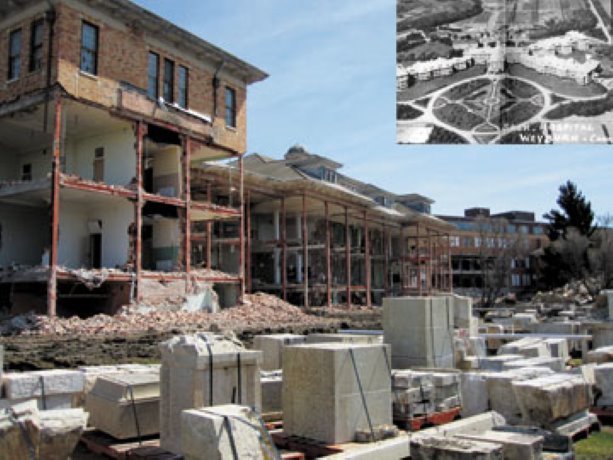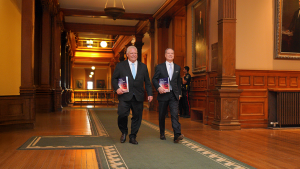It seems improbable that a town with fewer than 10,000 people might host a facility the size of the Souris Valley Hospital, once known as the Weyburn Mental Hospital.
WEYBURN, Sask
It seems improbable that a town with fewer than 10,000 people might host a facility the size of the Souris Valley Hospital, once known as the Weyburn Mental Hospital.
With a floor space approaching 50,000 square metres, the regional hospital was opened in 1921 as the largest building in the Commonwealth, eventually expanding to accommodate 2,000 patients.
The facility was closed in 1971, slowly falling into disrepair, until the property was handed over to the town in 2005. Although attempts were made to sell the property or to restore some buildings, neither buyers nor funding was found.
Estimates obtained by the city showed that even restoring heat could have cost as much as $1.5 million, with costs for full renovation starting at $50 million.
“At one point they added a fifth floor to the building that incorporated a flat roof instead of a peaked one and that really hastened the demise of the building,” said John McGinn, an architect with Alton Tangedal Architect Ltd. of Regina, the company hired to oversee demolition.
The $4.75 million demolition contract was awarded to Demco Decommissioning & Environmental Management Company of West Seneca, New York, then sub-contracted in its entirety to United Wrecking Inc., with headquarters in Mississauga.
Crews arrived in late October 2008.
“We began asbestos removal in the second week of November,” said Richard Hilts, senior project manager with United.
“The biggest challenge during the winter was the cold. We had a few weeks where temperatures hit minus 45C, so we were using propane heaters to keep the water flowing, which we needed for showers and to pressure-wash the inside of the building.”
Demolition began in May and much of the building crumbled easily, said Hilts.
“The walls and floors were really soft. After they turned off the heat years ago, the pipes burst, so those interior structures were in bad condition,” he said.
“The square steel framing, which was built in 20-foot sections, was still in pretty good shape.”
Hilts said that the concrete foundations, particularly those in the former powerhouse, were substantial.
“We were removing sections 12 feet by 12 feet and eight feet thick,” he said.
“We had to do a bit of prying and used a hammer to break them down.”
About 95 per cent of the building’s materials were recycled.
Among the historical salvage were two steam generators weighing in at 7,000 and 9,000 kilograms.
The generators were removed by excavator and then shipped to a museum in Calgary.
“We also saved a 1950s vintage X-ray machine, which was on the top floor and tricky to get at,” said Hilts.
“We built a ramp out of rubble, broke the machine down into components, then shipped it to a museum in Ottawa.”
The wrecker also salvaged architectural elements of the doorways, an auditorium balcony and 400,000 bricks requested by the Saskatchewan culture ministry to be incorporated into a display.
“I’ve never worked on a job where there was so much interest from the local community,” said Hilts.
“People either worked there, were treated in the hospital or had relatives who were. On a daily basis, at least a half-dozen people would come by and ask for a brick for a souvenir.”
The wrecker also delivered a bonus — a mural depicting the Regina Riot painted in 1955 by former patient James Eadie.
With the cost of preserving the mural estimated at $250,000, archivists had resigned themselves to preserving the painting through a series of high-resolution digital photographs.
“Our crew took it upon themselves to save the painting,” said Hilts.
“It was extremely fragile, painted on plaster. We cut the wall in three-foot sections, then framed it with two-by-sixes around the exterior.
“We knocked out the wall above and the floor section, then encased it in plywood and Plexiglas and delivered it to the Soo Line Historical Museum in Weyburn — our gift to the community.”
With demolition and concrete crushing finished, final grading and placement of topsoil is scheduled to be completed by Christmas.











Recent Comments
comments for this post are closed